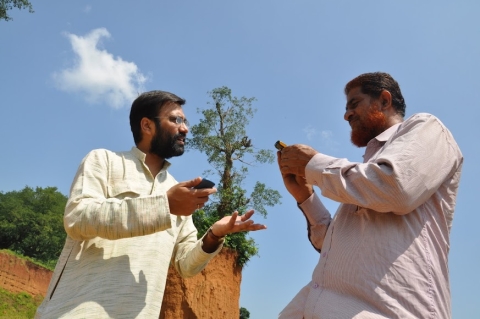
Knight International Journalism Fellow Shubhranshu Choudhary, left, discusses the CGnet Swara mobile network with community activist Azjal Khan. (Photo by Arjun Venkatraman)
When Shubhranshu Choudhary began working as a Knight International Journalism Fellow in India in 2009, he realized that even the most remote villages of the Chhattisgarh region where he was based had access to cell phones. Those phones offered an opportunity for him to build a cellular news network that allows the villagers to communicate with each other as well as with activists, government officials and mainstream media.
Today his network, CGnet Swara, has logged tens of thousands of calls from citizen journalists, leading to hundreds of news stories.